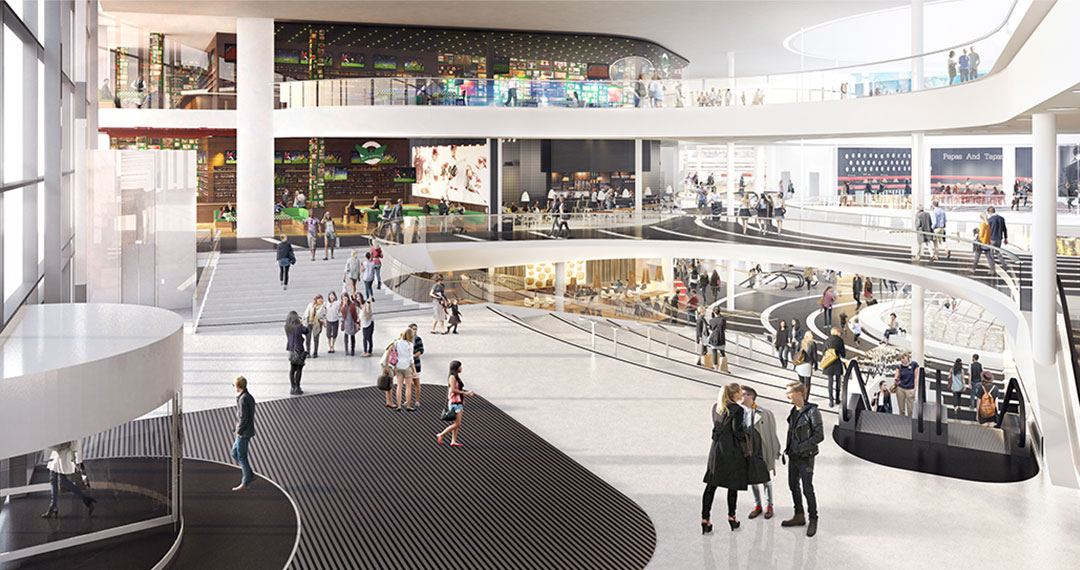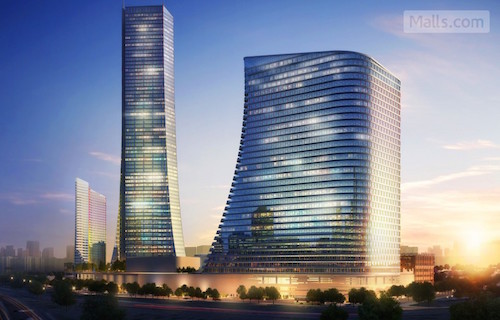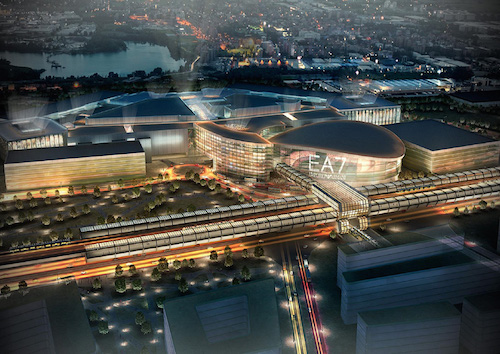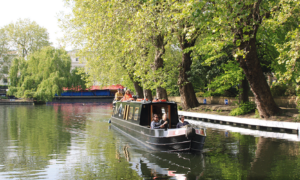As American retail redefined the industry in the 20th century with suburban malls, national specialty chains and big-box discounters, Europe defiantly continued to go its own way.
Urban high-street shopping continued to thrive. Full-service department stores continued to offer a broad selection and high-quality service. Their store windows continued to present the magic of creative display. And as American retail in the 21st century is roiled, once again – by changing consumer habits and expectations, a game-changing recession and a worldwide Internet commerce – Europe is still carving its own path. With malls.
Malls??
Yes, that’s right. If you’re an expat living anywhere in Europe, there’s an exciting new retail shopping experience coming to you whether you live in Scandinavia or on the Mediterranean. Based on the scope of the undertaking, and the billions of investments involved, this is all a pretty serious commitment to capturing European consumers’ shopping and recreational spend.
The term du jour is “mixed-use centers,” but the profile is pretty much the same: Millions of square feet, hundreds of merchants, dozens of restaurants and movie screens. But there are differences, and it’s not just the presence of restaurants, movie theaters and the occasional theme park. There’s also a level of innovative architecture and the kinds of attractions you never saw in Paramus, New Jersey.
The Mall of Scandinavia, in Stockholm, is being touted as “the mall of tomorrow” – a 1.08 million-square-foot, 250-store shopping center that contains Sweden’s first commercial Imax cinema and 22 restaurants, twice the average of other Swedish shopping centers.
Mall of Scandinavia cost about $680 million, which seems reasonable for the center’s intense design and technological innovations. Paris-based commercial property developer Unibail-Rodamco Developers boasts that one-third of Sweden’s entire population lives within a 90-minute drive. Those who make the drive will be exposed to brands that can’t be found anywhere else in the region. It opened in November 2015, fully leased. Not surprisingly, Swedish retailer H&M has the biggest store. Other key tenants include the first Nike, JD Sports and Intimissimi stores in the Nordic countries; Sweden’s first Disney and Lego stores; and the first Michael Kors, Superdry and American Vintage stores in a Swedish shopping center.
And why not? Stockholm is the fastest-growing city in Europe, with its population expected to expand by 11 percent by 2020, according to a Stockholm Chamber of Commerce report. According to another report, Swedish retail trade is expected to have grown 4.5 percent in 2015, compared with a 3.4 percent increase in 2014. “Is it worth all the effort and the money that’s been poured in?” Unibail- Rodamco chief development officer Olivier Bossard asked rhetorically. His answer: “Yes. Because boring retail is going to die.”
Nor is the Swedish behemoth the only major piece of mixed-use development going on in Europe.
If boring retail is about to die, it’s dying all over the continent:
• Mall of Europe, in Brussels, is part of a mixed-use project in the Europea district, near the Atomium (the futuristic atom-like structure built for the 1958 Brussels World Fair). The $592 million project is 1.23 million square feet, has plans for 240 stores and 30 restaurants, plus a 21-screen cineplex that will be Belgium’s largest. It will also boast the world’s first “Spirouland” theme park. (Spirou, of course, is the wildly popular Franco- Belgian comic book character.) The Mall of Europe is set to open in 2021.
• Metropol Mall, Istanbul, is, at 7.6 million square feet, one of the biggest construction sites on earth. Its grand tower will be one of the tallest buildings in Europe. It will be home to about 470 retailers and thousands of international streets of fashion.
• Emaar Square, Istanbul, is expected to be 1.6 million square feet. It will include an ice rink and an underwater zoo, much like the fabulous Dubai Mall that is also owned by UAR-based Emaar Properties. There will be 2,400 seats for the movies and 4,500 spaces for cars.
• The Prado, in Marseille, France, will open in 2017, next to the Vélodrome and close to the seafront. It will have around 50 retail storefronts, including a 100,000-square-foot Galeries Lafayette department store. It’s one of several large malls scheduled for the south of France, including Polygone Riviera (in Cagnes-sur-Mer, near Nice) and Les Terrasses du Port (also in Marseille).
• The Űberseequartier in Hamburg, Germany, is a $925 million project on the banks of the Elbe River, set to open in 2021. The massive undertaking will cover close to 2 million square feet, room for 190 stores, plus restaurants, residences, offices, a hotel, a multi-screen cinema and a cruise terminal.
• The Westfield Milan is a $1.5 billion undertaking in Italy’s fashion capital, one of the first by the Australian developer outside of Australia, the U.K. and U.S. The 1.8 million-square-foot mall will feature more than 300 stores, 50 restaurants and parking for 10,000 cars. The anchor tenant is a Galeries Lafayette flagship.
• The Intu Costa del Sol in Malaga, Spain, is the third Spanish shopping center project by the British development firm, Intu Properties. The developer has acquired land near Málaga to build a regional destination center that includes stores, a gourmet market, a surf lake, artificial ski slopes, a mini theme park and restaurants.
Why on Costa del Sol? Maybe the 9 million, mostly well-heeled, tourists a year. In other words, ¿porque no?
• Vegas Kuntsevo, Moscow, is the third “Vegas” franchise from Moscow Region’s Crocus Group. This one, in the west of Moscow, will be 230,000 square feet of retail, amusement park, cinema and ice rink.
• Croydon, London, is another Westfield project, in partnership with Hammerson plc. It’s actually a redevelopment, combining the existing, nearly 50-year-old Whitgift Centre and neighboring, newer Centrale, built in 2004 as one of the largest covered retail developments in London. The $1.5 billion project – combining retail, leisure and restaurants over 1.5 million square feet – is due to begin construction this year.
• Westfield Bradford, City of Bradford, West Yorkshire, U.K., is another redevelopment from Australia’s Westfield Group. It was begun in 2007, as The Broadway, but there were delays filling some of the larger stores and problems with local protestors. However, it opened last December with 570,000 square feet of retail, anchored by Marks & Spencer and Debenhams.
• Weberzeile Ried im Innkreis, Austria, was designed to work within the transportation system and architecture of this 900-year-old city in the Innviertel region. The anchor tenants of the 237,000-square-foot center, owned by Spar European Shopping Centers, include MediaMarkt, H&M, Bik Bok and Eurospar.
• Lublin Mall, Poland, has an IKEA superstore, a hypermarket and the country’s first consumer electronics store. Lublin is Poland’s ninth-largest city.
• Berlin Shopping Center is a 700,000-square-foot mixed-use project set in the German capital’s O2 World, also known as the Mercedes-Benz Arena. The shopping center will have 120 retail outlets, plus restaurants, office space, hotel, casino and cinema. The greater project contains space for multiple sporting events and concerts.
• City Centre South, Coventry, U.K. will begin construction this year on a 560,000-square-foot development with a new department store, several fashion boutiques and 30 other assorted retail units, plus nine restaurants.
By our estimate, that’s more than 20 million square feet of new construction in 11 European nations, with a value of more than $10 billion. You’re asking, “Why is so much retail development going on when some European economies are growing at less than 3 percent?” Well, there’s your answer … when banks are offering negative interest rates, there’s great access to capital, and retail real estate development might be the fastest way to both a return and to a tax break for investors groups.
















